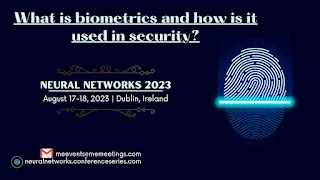What is biometrics and how is it used in security?
Biometrics are biological measurements — or
physical features — that can be used to identify individuals. Fingerprint
mapping, facial recognition, and retina scanning are all examples of biometric
technology, although they are only the most well-known. Researchers suggest that the shape of an ear,
the way a person sits and walks, distinct body odours, veins in one's hands,
and even facial contortions are all unique identifiers. These characteristics
help to define biometrics.
Three Types of Biometrics Security:
While biometrics have additional applications,
they are most commonly utilised in security, and they can be classified into
three types:
- Biological biometrics
- Morphological biometrics
- Behavioral biometrics
Biological biometrics make use of genetic and
molecular properties. These may include characteristics such as DNA or blood,
which may be analyzed using a sample of your body's fluids.
Morphological biometrics are concerned with the
structure of your body. More bodily characteristics, such as your eye,
fingerprint, or face shape, can be mapped for use with security scanners.
Behavioral biometrics are based on patterns
that are unique to each individual. If these patterns are recorded, how you
move, speak, or even type on a keyboard can reveal your identity.
Biometric identity is becoming increasingly
important in our daily security. Even in the case of twins, physical traits are
largely constant and individualized. The unique biometric identity of each
individual can be used to replace or supplement password systems for computers,
phones, and restricted access rooms and buildings. After obtaining and mapping
biometric data, it is saved to be matched with subsequent attempts at access.
This data is usually encrypted and saved on the device or on a remote server.
Biometric scanners are pieces of hardware used
to acquire biometric data for identification verification. These scans compare
the saved database to permit or deny system access.




Comments
Post a Comment